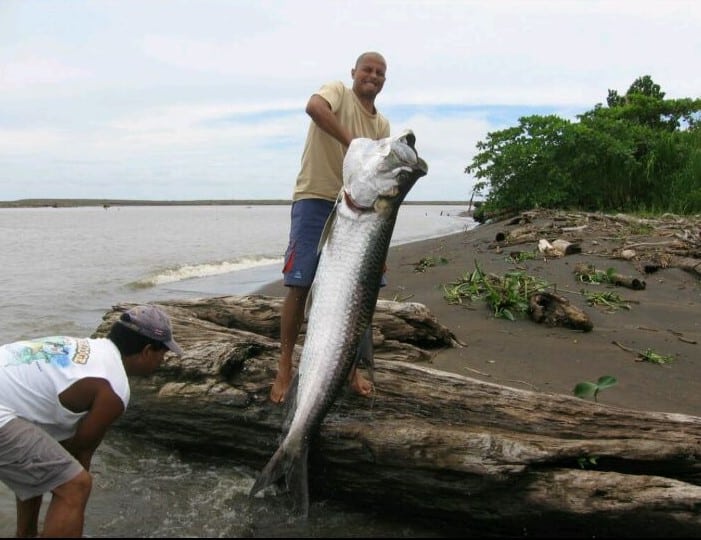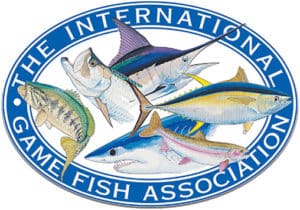Contact us if your target is Tarpon in Costa Rica
See our Tarpon Photo Gallery

Tarpon
Costa Rica has good Tarpon fishing points in the Caribbean, and can be found year-round. Historically, the best Tarpon fishing in Costa Rica is in October and November.
It occurs in tropical temperate and subtropical temperate waters of the Atlantic Ocean. This coastal fish can be found both on the coast and on the coast. Due to its ability to swallow air directly into the air bladder by “rolling” on the surface, the shad can enter brackish and fresh waters that are stagnant and virtually oxygen free. Such areas are relatively free of predators, thus offering a convenient shelter for young people.
The body is compressed and covered with very large scales. The lower jaw protrudes up and up. The teeth are small and thin, and the throat is covered by a bone plate. The dorsal fin consists of soft rays 12 16 (without spines), the last of which is very elongated. The back is greenish or bluish, varying in the dark from silver to almost black. The sides and belly are shiny silver.
They can throw up to 12 million eggs. Tarpones grow slowly and generally do not reach maturity until they are six or seven years old and measure approximately 4 ft (1.2 m).
Fishing methods are still fishing with live mullets, pinfish, crabs, shrimp, etc., or throwing or trolling with spoons, plugs or other artificial lures. The best fishing is at night when the tarpon is feeding. They are difficult to hook due to their hard and bony mouths. Once hooked, they began a stubborn and spectacular fight, often jumping up to 10 feet out of the water. It was one of the first species of salt water to be declared a game fish.
Interesting Facts About the Tarpon
- In Costa Rica, the Tarpon is fished with the catch and release method
- Some call him the king of sport fishing fish
- There are 2 types of Tarpon, the Atlantic (Caribbean) and the Pacific. The most common in Costa Rica is the first one
- It can reach 8 feet long and weigh almost 300 pounds, is currently in the estuaries and coastal waters of the entire Caribbean Sea of Costa Rica
- Tarpons have quite long lives. It is known of one who lived 64 years
- Birds that feed on fish feed on young tarpon. Porpoises and alligators sometimes eat the biggest ones. But the most dangerous predators are sharks
- The Tarpon is appreciated in sport fishing for his acrobatic jumps and his ability to fight
- The Tarpons are scavengers and eat almost anything. Despite their large size, they feed on surprisingly small organisms, such as mullets, ladybugs, pinfish, grunts, crabs, fin herring, sardines and even catfish
- The Tarpon has an incredible color vision with 5 types of cone cells in their eyes, unlike humans that we have only 3 types of conical cells. The Tarpon can see the light utra violet
- Tarpons breathe oxygen from water with gills, but they can also use oxygen from the air in the atmosphere



